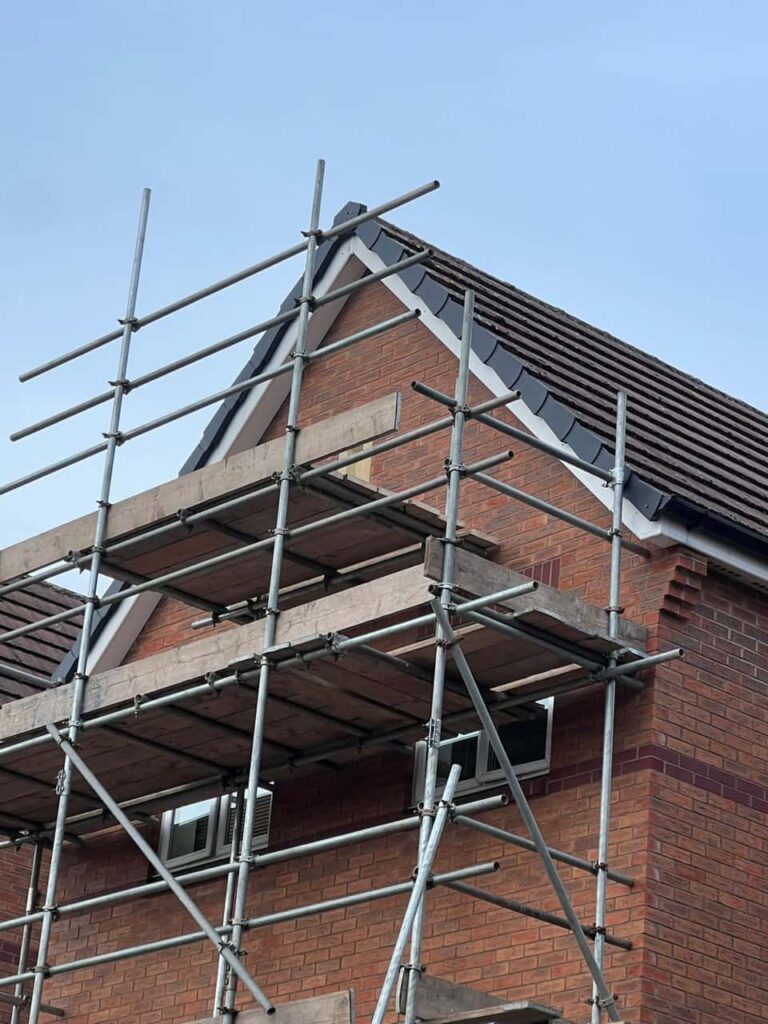Introduction: Flat roofs offer valuable space for various uses, including HVAC installations, green roofs, or recreational areas. However, safe and efficient access is crucial to utilise these spaces and ensure full routine maintenance. This blog post, brought to you by Radford Roofing Repairs, delves into the essential considerations and best practices for incorporating access points and ladders on flat roofs.
The Importance of Proper Roof Access
Proper access points ensure safety for maintenance personnel, facilitate regular inspections and prolong the roof’s lifespan by ensuring that issues are promptly addressed. Well-designed access also minimises the risk of damage to the roof during transit, a common issue with poorly planned access paths.
Planning Roof Access Points
- Assessing Needs
- Determine the frequency of access required and the type of personnel and equipment needed to use the access points. This assessment will help dictate the size, type, and number of access solutions needed.
- Compliance with Building Codes
- Consult local building codes and regulations to ensure compliance, particularly regarding the dimensions and specifications of roof access methods. These regulations are designed to ensure safety and accessibility.
- Location and Safety
- Position access points strategically near essential roof elements that require maintenance or near areas used frequently. Ensure that these access points do not compromise the roof’s structure and are equipped with safety features, such as non-slip surfaces and handrails.
Types of Access Solutions for Flat Roofs
- Internal Access
- Stairs and Hatches: For buildings with frequent roof access needs, internal stairs leading to a roof hatch provide a secure and weather-resistant solution. Ensure the hatch is large enough to accommodate equipment that may need to be transported to the roof.
- External Ladders
- Fixed Ladders: Permanent fixed ladders are suitable for buildings with limited external space. They should be made from durable materials, such as galvanised steel or aluminium, that are resistant to weather extremes.
- Cage Protection: A safety cage is recommended for ladders extending more than 20 feet to enhance safety by preventing falls.
- Safety Posts and Guardrails
- Safety Posts: Install safety posts at roof hatches or around ladders to provide secure points for harnesses and safety lines.
- Guardrails: Consider installing guardrails around the perimeter of the roof and near access points to prevent falls, particularly if the roof is frequently accessed or used for leisure or other activities.
Additional Considerations
- Material Durability
- Choose durable and appropriate materials for the roof’s environmental conditions to ensure longevity and reduce maintenance needs.
- Ease of Use
- Access solutions should be easy to use and require minimal effort to open or operate, ensuring quick and safe access in all conditions.
- Insulation and Weatherproofing
- Ensure that any openings for access points are properly sealed and insulated to prevent leaks and thermal loss. This is crucial to maintain the energy efficiency of the building.
- Regular Maintenance
- Like other roof parts, access points and ladders need regular inspection and maintenance to remain safe and functional. Check for rust, corrosion, loose fittings, and other potential issues.
Conclusion: Incorporating well-designed access points and ladders into flat roof designs enhances the roof’s functionality and ensures safety and compliance with building codes. By prioritising safe and strategic access to flat roofs, building owners can maximise the usability and longevity of their roofing investment.
Call us on: 024 7542 4996
Click here to find out more about Radford Roofing Repairs
Click here to complete our contact form and see how we can help with your roofing needs.

